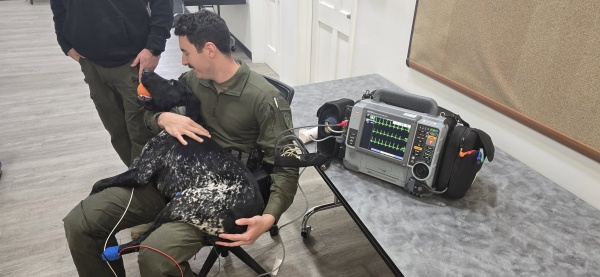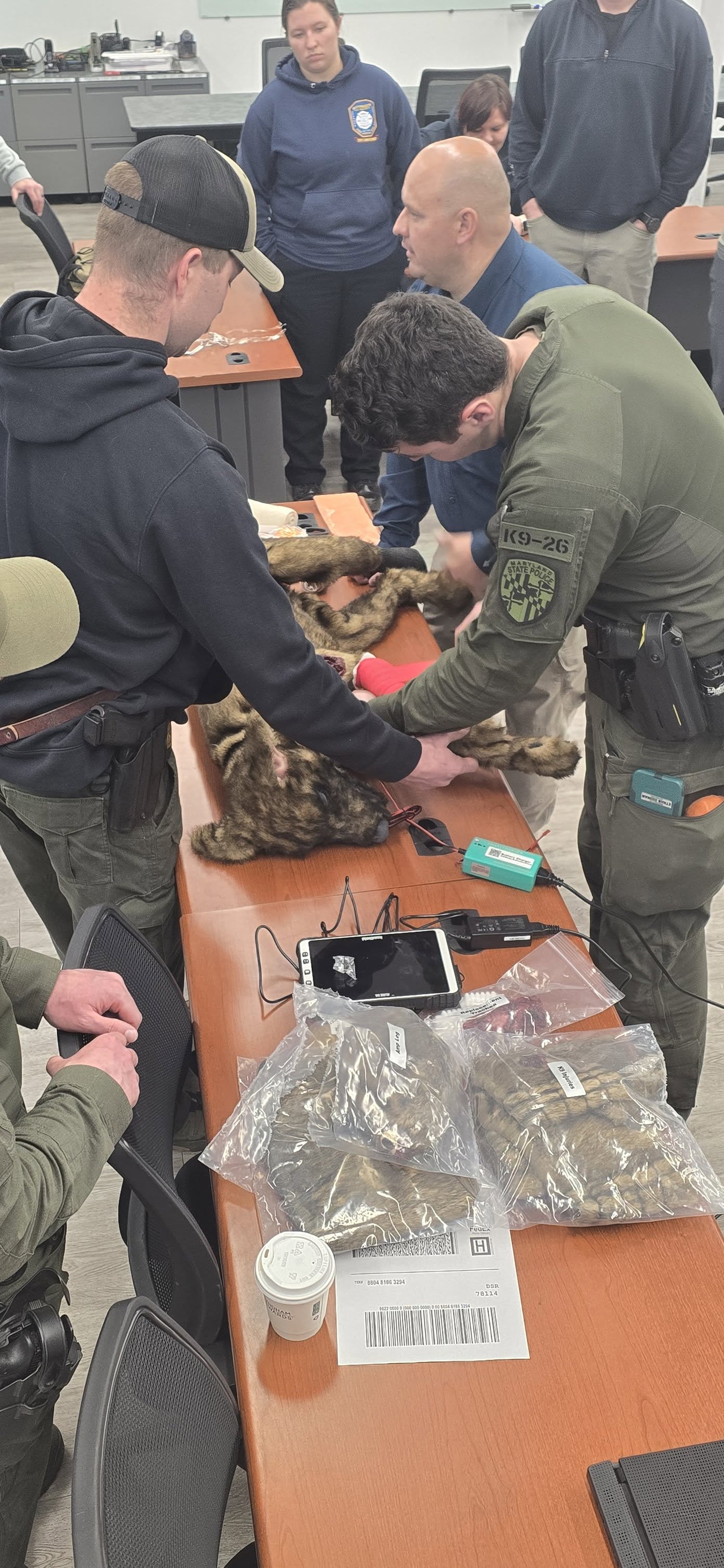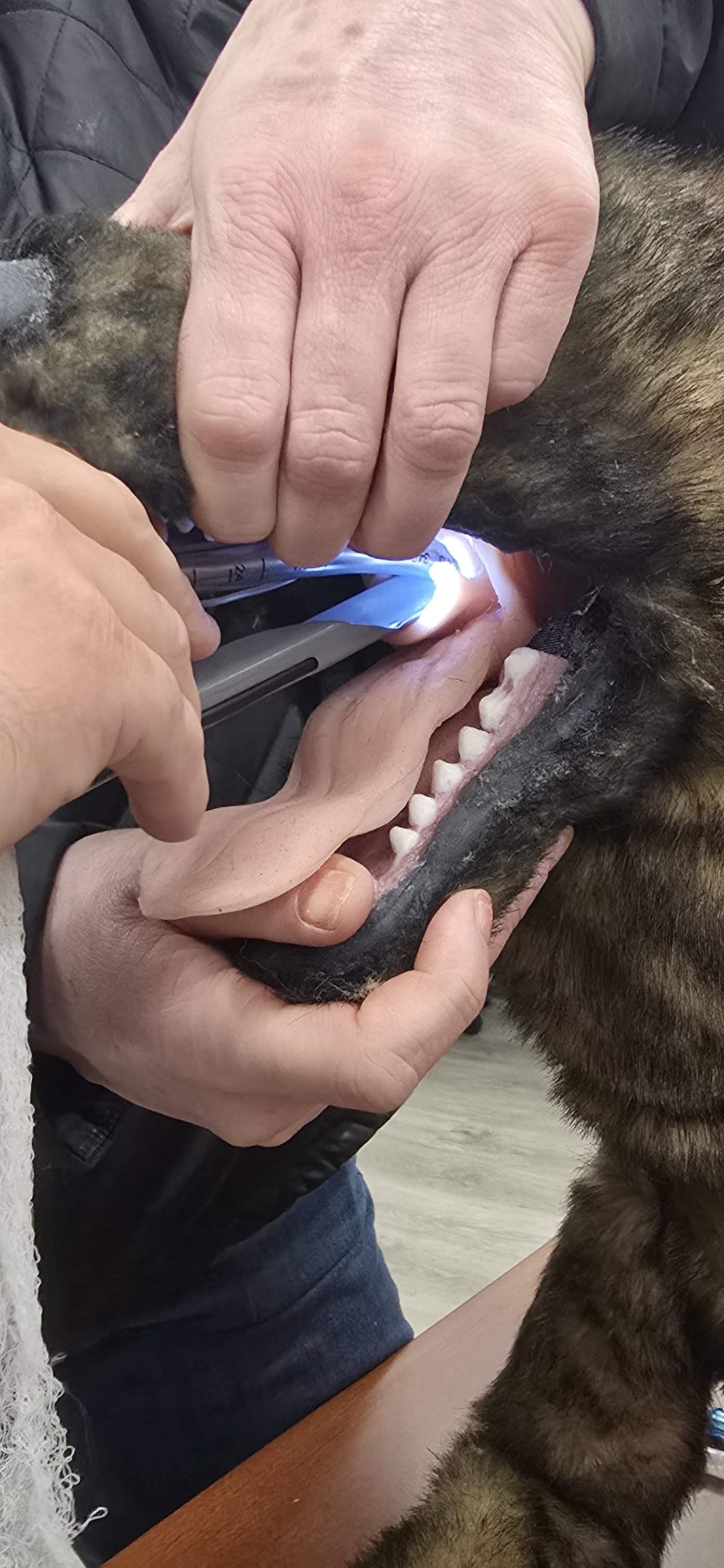On April 12th Garrett County Emergency Services hosted an inter-departmental training and continuing education program lead by the President of the National Association of Veterinary Emergency Medical Services, flight paramedic, and Impact EMS instructor Rick Maricle.
The topic of the training was operational K9 emergency medical care. This CAPCE accredited course was supplemented by a K9 officer for non-invasive assessment and the latest state-of-the-art high fidelity K9 mannequin for advanced skill demonstration and training. Personnel from Garrett County Emergency Services, Southern Garrett Rescue Company 9, Bittinger Volunteer Fire Department, Deep Creek Volunteer Fire Company, Maryland State Police, Maryland Institute for Emergency Medical Services Systems (MIEMSS) and Maryland Department of Natural Resources - Natural Resources Police came together for this excellent training opportunity.














































